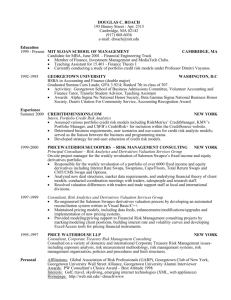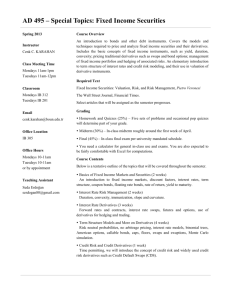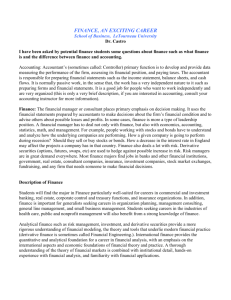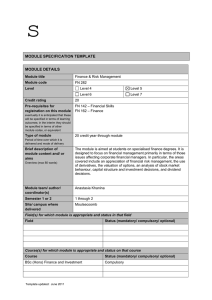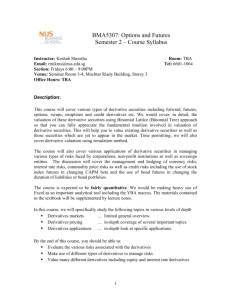MATH 586 – Theory and Practice of Fixed Income Modeling
advertisement
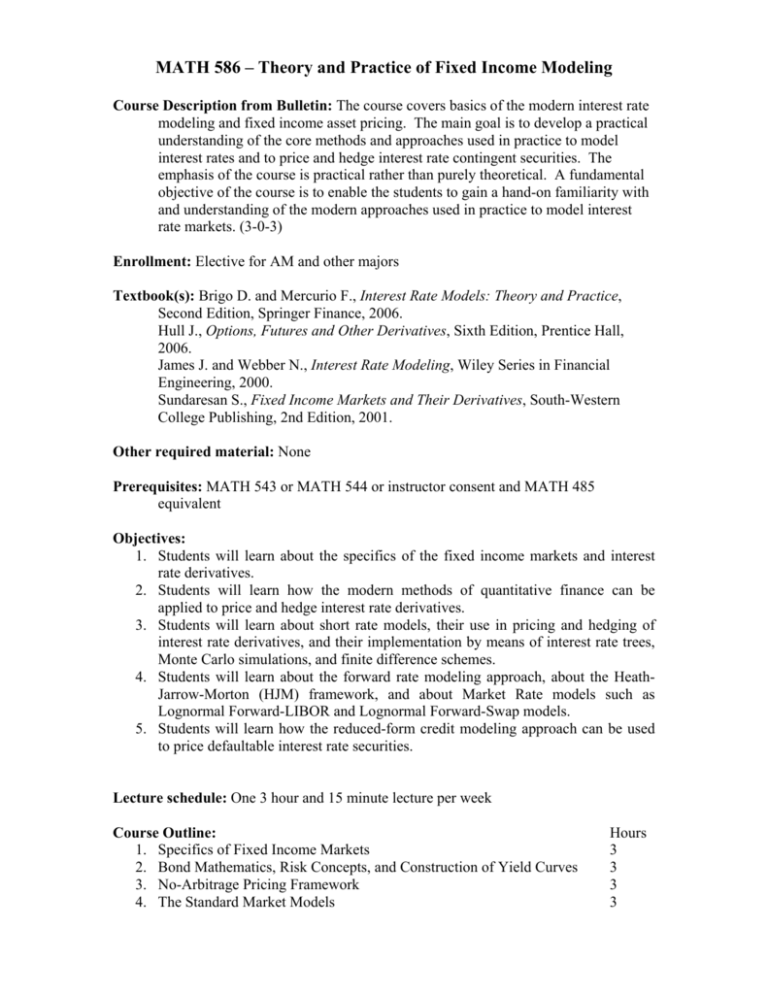
MATH 586 – Theory and Practice of Fixed Income Modeling Course Description from Bulletin: The course covers basics of the modern interest rate modeling and fixed income asset pricing. The main goal is to develop a practical understanding of the core methods and approaches used in practice to model interest rates and to price and hedge interest rate contingent securities. The emphasis of the course is practical rather than purely theoretical. A fundamental objective of the course is to enable the students to gain a hand-on familiarity with and understanding of the modern approaches used in practice to model interest rate markets. (3-0-3) Enrollment: Elective for AM and other majors Textbook(s): Brigo D. and Mercurio F., Interest Rate Models: Theory and Practice, Second Edition, Springer Finance, 2006. Hull J., Options, Futures and Other Derivatives, Sixth Edition, Prentice Hall, 2006. James J. and Webber N., Interest Rate Modeling, Wiley Series in Financial Engineering, 2000. Sundaresan S., Fixed Income Markets and Their Derivatives, South-Western College Publishing, 2nd Edition, 2001. Other required material: None Prerequisites: MATH 543 or MATH 544 or instructor consent and MATH 485 equivalent Objectives: 1. Students will learn about the specifics of the fixed income markets and interest rate derivatives. 2. Students will learn how the modern methods of quantitative finance can be applied to price and hedge interest rate derivatives. 3. Students will learn about short rate models, their use in pricing and hedging of interest rate derivatives, and their implementation by means of interest rate trees, Monte Carlo simulations, and finite difference schemes. 4. Students will learn about the forward rate modeling approach, about the HeathJarrow-Morton (HJM) framework, and about Market Rate models such as Lognormal Forward-LIBOR and Lognormal Forward-Swap models. 5. Students will learn how the reduced-form credit modeling approach can be used to price defaultable interest rate securities. Lecture schedule: One 3 hour and 15 minute lecture per week Course Outline: 1. Specifics of Fixed Income Markets 2. Bond Mathematics, Risk Concepts, and Construction of Yield Curves 3. No-Arbitrage Pricing Framework 4. The Standard Market Models Hours 3 3 3 3 5. One-factor Short Rate Models 6. Valuation Methods: Interest Rate Trees 7. Valuation Methods: The Monte Carlo Simulation 8. Valuation Methods: Finite Difference Schemes 9. Two-factor short rate models 10. The Heath-Jarrow-Morton Modeling Framework 11. Market Forward Rate Modeling Framework 12. Pricing of Defaultable Fixed Income Securities Assessment: Homework Quizzes Final Exam 30% 30% 40% Syllabus prepared by: Andrei Lyashenko and Tomasz Bielecki Date: 03/14/06 6 6 3 3 3 4.5 4.5 3

